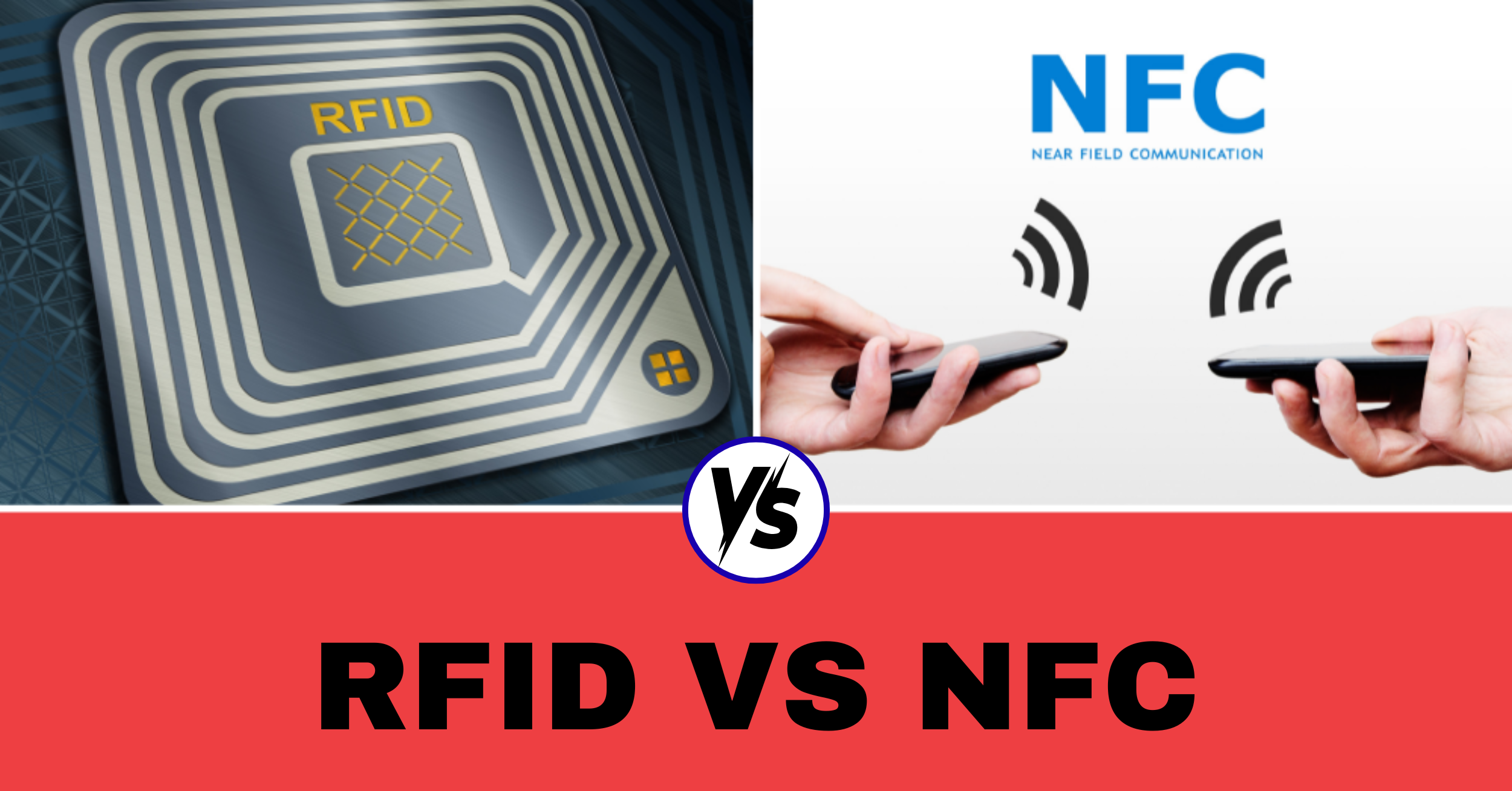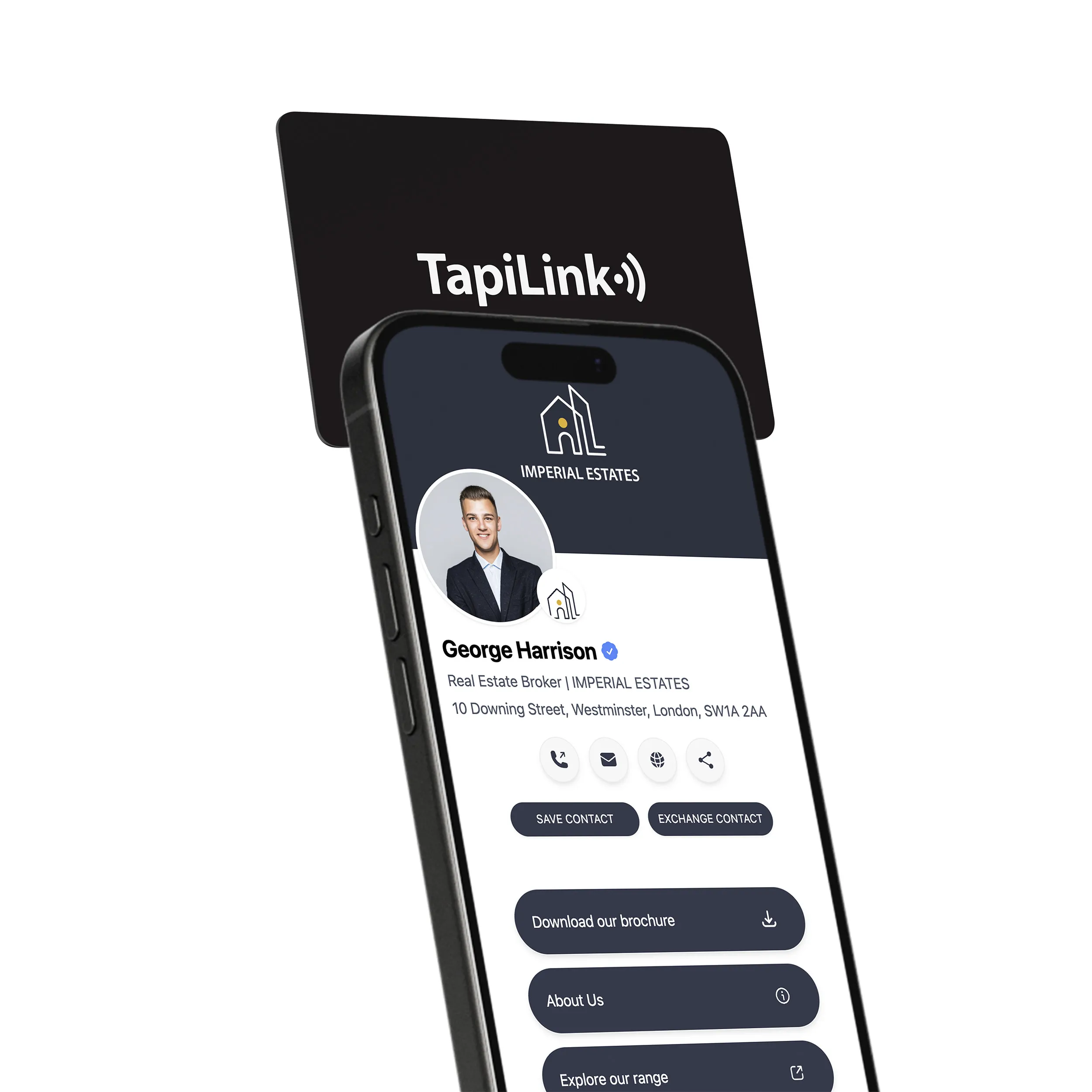Subscribe To Our Newsletter
Join our 50,000+ happy customers
[mc4wp_form id=""]
We’ll Design 🎨 Your Card For Free!
Free Next Day 📦 Delivery in UK
We Ship Worldwide 🌎 ✈️

NFC is close range, quick information sharing technology. It’s safe, secure, perfect for everyday use. RFID is designed to share bulk information in a wide range. NFC connects people and has two way exchange capability. RFID manages things, can read multiple tags at once but mostly one way.
Did you know that over 90% of in-store card payments in the UK are now contactless? NFC and RFID are rapidly growing in the UK. Both technologies look similar, but they serve very different purposes. NFC has become part of daily life from tapping your phone on the Tube to paying for coffee in seconds. In contrast, RFID is working behind the scenes. In retail, warehouses and even hospitals are using it to manage stock faster and reduce errors.
So, if you’re choosing between them, think convenience vs scale. NFC is perfect for engaging customers face-to-face, while RFID is built for efficiency behind the scenes. At TapiLink, we make NFC simple with smart tap-to-share cards and tools designed to help your business connect instantly.
NFC, or Near Field Communication, is a form of high-frequency RFID designed for very short distances, usually just a tap within 4 cm. Unlike standard RFID, NFC allows two-way communication, so devices can both send and receive information. The best part? Almost every modern smartphone is NFC-enabled, which is why you can tap your phone or card at the checkout and complete a secure transaction in seconds.
In the UK, NFC has become second nature thanks to the popularity of contactless payments and TfL’s tap-in system across buses and the Tube. But it’s not just about payments. NFC is also being used for digital business cards, tap-to-review stands, loyalty schemes, and even smart locks. Its short range makes it secure, while the convenience of phone compatibility means it’s accessible to almost everyone. For everyday interactions where trust and simplicity matter, NFC is the go-to choice.
RFID, or Radio-Frequency Identification, uses radio waves to track and identify items. Think of it as a tag with information and a reader that pulls it out no line of sight needed. That’s why shops can scan hundreds of items in seconds, or why your staff badge works with just a swipe.
In the UK, RFID runs on three main bands: LF (125 kHz) for pet chips and entry cards, HF (13.56 MHz) which includes NFC for contactless cards, and UHF (865–868 MHz) approved for warehousing and logistics. For British businesses, RFID saves time, reduces errors, and gives real-time visibility making it a powerful tool in retail, supply chains, and security.
RFID can work across several frequency bands. Low Frequency (around 125 kHz) is short-range and often used in animal ID or basic entry cards. High Frequency (13.56 MHz) includes NFC and works up to about a metre. Ultra-High Frequency (865–868 MHz in the UK) can stretch several metres, perfect for warehouses and supply chains. NFC, as a type of HF RFID, is deliberately limited to just a few centimetres a quick tap. That close range is exactly what makes it so secure for payments and personal use.
RFID is mostly one-way. The reader talks, the tag responds, and that’s the end of it. NFC works differently, it allows two-way exchanges. When you tap your phone on a payment terminal or another device, they both send and receive information instantly.
Here’s a big difference. RFID is brilliant at reading multiple tags at once. A single reader can scan hundreds of items in seconds, even without direct line of sight. That’s why it’s a go-to for retail stock counts and logistics. NFC doesn’t do this; it’s one tag or device at a time. That might sound like a limitation, but it’s perfect for personal, controlled interactions.
To use RFID, you usually need special equipment like scanners or fixed readers, which is fine for industrial setups. NFC doesn’t need any extras, it’s already built into most smartphones, bank cards, and even watches. If you’ve tapped your card to pay for coffee or tapped in on the Tube, you’ve used NFC.
Because NFC only works up close and adds encryption, it’s tough for anyone to skim or steal your data. That makes it ideal for payments, IDs, and secure access. RFID can also be safe, but its level of security depends on the tag and system setup. Some tags are basic and unprotected, which is fine for stock but not for sensitive information.
| Aspect | NFC (Near Field Communication) | RFID (Radio-Frequency Identification) |
| Range | Very short — 2–4 cm (tap required) | From a few cm up to 10+ metres (depending on band) |
| Frequencies | Fixed at 13.56 MHz (HF) | LF (125 kHz), HF (13.56 MHz), UHF (865–868 MHz UK) |
| Communication | Two-way — devices exchange data | Mostly one-way — the reader pulls info from tag |
| Multi-Read | One tag at a time | Can read hundreds at once |
| Devices | Built into smartphones, bank cards, and smartwatches | Requires dedicated readers and antennas |
| Security | Encrypted + close range = very secure | Varies — some tags unprotected, others encrypted |
| Cost | Tags/cards 20p–£5; no reader needed | Tags as low as 5–10p, but readers cost hundreds+ |
| Best For | Payments, travel, business cards, loyalty schemes | Warehousing, retail, logistics, asset tracking |
The UK has become a hot spot for both NFC and RFID, though they serve very different needs.
NFC has taken off in everyday life. Contactless cards and mobile wallets are now the norm, with more than 90% of in-store card payments made by tap. London’s transport network made NFC travel famous worldwide, and now you’ll see it in buses and trains across the country. Businesses are also using NFC for things like digital business cards, loyalty schemes, and customer review stands, because it’s simple, secure, and works with the phone you already carry.
RFID, by contrast, is more of a behind-the-scenes hero. UK retailers use it to track clothing, reduce losses, and manage click-and-collect orders. Warehouses rely on RFID to scan thousands of items in seconds, saving time and cutting human error. Even hospitals are trialling it to keep track of critical equipment.
1. You want to make customer interactions quick and smooth.
2. You’re setting up contactless payments, digital business cards, tap-to-review points, or loyalty schemes.
3. You don’t want to invest in extra hardware. Smartphones already do the job.
4. You’re looking for low upfront costs and fast ROI.
1. You need to track or manage large numbers of items.
2. You’re running a warehouse, retail stockroom, logistics hub, or hospital equipment system.
3. Bulk scanning and time-saving efficiency matter more than consumer interaction.
4. You’re prepared for higher setup costs in exchange for long-term efficiency.
For small businesses, NFC is the budget-friendly choice. An NFC tag or sticker in the UK typically costs 20p–£1, while durable NFC business cards can range from £2–£5 each. You don’t need to buy scanners either. Almost every smartphone already works as an NFC reader. That keeps startup costs low and ROI quick, especially if you’re using them for digital cards, review stands, or loyalty schemes.
RFID looks cheaper at first glance because passive UHF tags can cost as little as 5p–10p each in bulk. The catch is the hardware. A handheld RFID reader usually costs £500–£1,500, while fixed readers with antennas can run into the thousands. For SMEs managing lots of stock, that investment pays off by saving hours on inventory checks and cutting errors.
You probably already use Apple Pay or Google Pay for the odd coffee, right? More and more people in the UK are ditching plastic cards altogether and paying straight from their phones or watches. Mobile wallets are growing fast, especially with younger generations who expect everything to be digital. Over the next few years, NFC will be at the heart of payments, travel, and loyalty schemes, all from a simple tap.
If you run a shop or deal with stock, RFID is where the magic happens. RAIN RFID, the ultra-high-frequency version, lets businesses scan hundreds of items in seconds. That means fewer mistakes, faster stock checks, and smoother click-and-collect. UK retailers are already rolling it out, and warehouses are following quickly. For SMEs, this could mean big savings and less time spent counting boxes.
It won’t just be payments and travel. Councils, universities, and even offices are experimenting with NFC cards and digital passes. Imagine tapping your phone to get into uni lectures, the library, or even your local gym. Digital ID cards and licences could soon live on your phone too, making NFC part of everyday life well beyond the checkout.
You’ll also see more clever tech combos. Some businesses now use tags with both NFC and QR. So you can tap if you’ve got a newer phone, or scan if you don’t. And while Bluetooth Low Energy (BLE) is competing with RFID in areas like healthcare, RFID still wins on cost when you need to track thousands of items.
Answer: NFC usually wins on security. Why? Because you’ve got to be right up close, just a couple of centimetres, for it to work. That, plus strong encryption, makes it tough to skim. RFID can be secure too, but cheaper tags often skip encryption, which is fine for stock checks but not for your personal data.
Answer: Yes and no. Your phone can read NFC tags because nearly every modern smartphone is equipped with NFC. That’s how tap-to-pay and digital business cards work. But the longer-range RFID tags used in warehouses? Nope, you’ll need special scanners for those..
Answer: Not far at all and that’s the point! NFC usually works within 2–4 cm, sometimes up to 10. You’ve basically got to tap. That tiny range keeps things like payments and IDs safe from unwanted scans.
Answer: For business cards, NFC is the clear winner. Why hand someone a card they can’t use without a clunky scanner? With NFC, they just tap with their phone and instantly have your details. Quick, slick, and way more impressive at networking events.
NFC and RFID may share the same roots, but they serve very different purposes. RFID is the workhorse, powering retail, warehouses, and logistics by tracking huge volumes of items with speed and accuracy. NFC is the everyday helper you already use. Paying with your phone, tapping into the Tube, or sharing contact details in seconds. Together, they’re shaping how the UK connects, moves, and does business.
For most small businesses, NFC offers the quickest way to impress customers and keep things simple. That’s where TapiLink comes in. Giving you smart, modern NFC business cards and tap-to-review tools that help you stand out with just one tap.
Join our 50,000+ happy customers
Copyright © 2025 TapiLink, made with ❤️ in United Kingdom. TapiLink is a trading name of SERVICEWORLD LIMITED (company number: 13239157), whose registered office is at 34 Green Street, London, England, E7 8BZ

Subscribe to our newsletter below and get 10% exclusive discount on your first order.